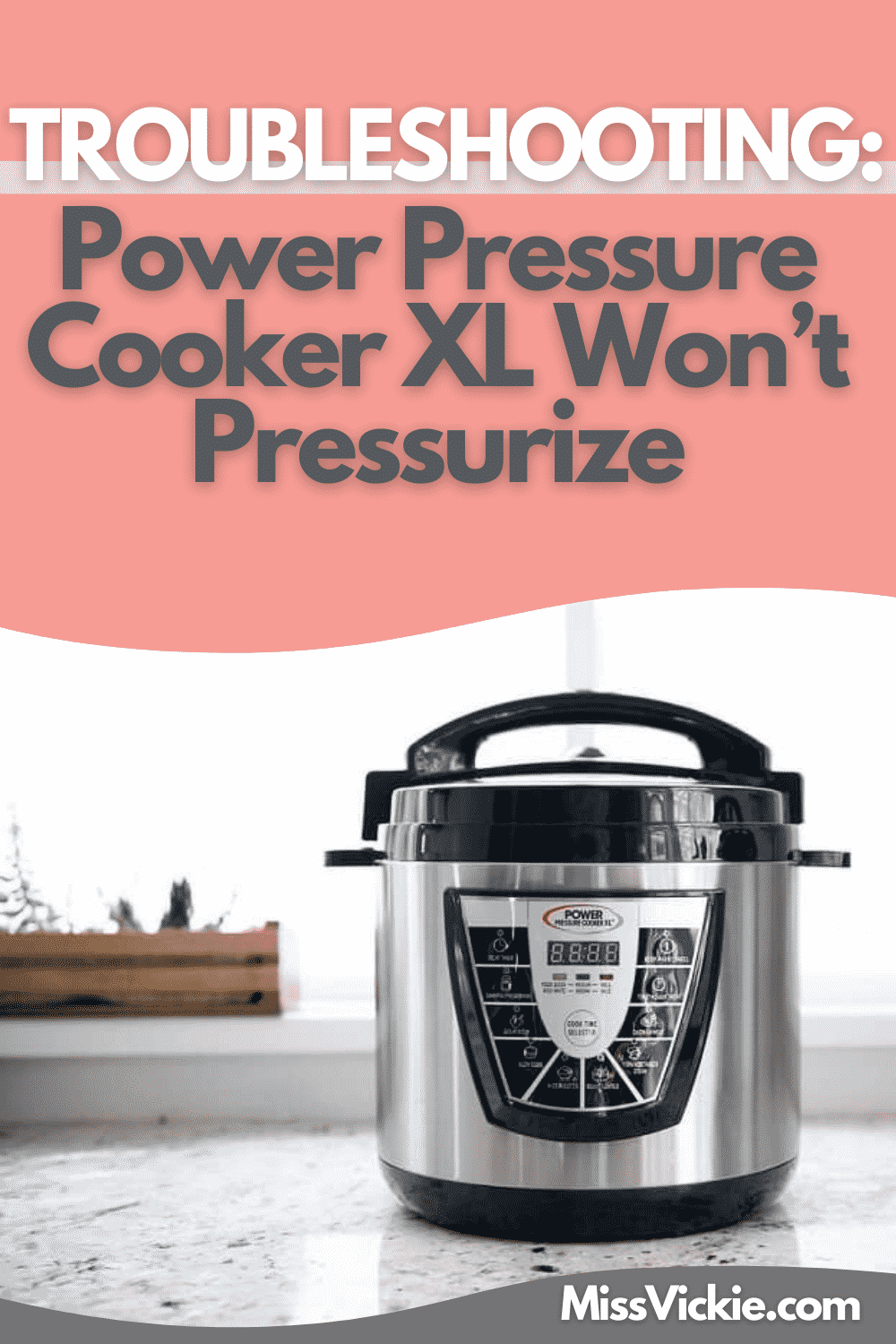
DISCLOSURE: This post may contain affiliate links, meaning when you click the links and make a purchase, I receive a commission. As an Amazon Associate I earn from qualifying purchases.
Although XL pressure cookers are easy to use and quite reliable, things can go wrong from time to time.
One of the most common issues you might experience is when your Power Pressure Cooker XL won’t pressurize.
Troubleshooting: Power Pressure Cooker XL Won’t Pressurize
Your first thought might be that your pressure cooker has a damaged seal or something wrong.
However, instead of letting your thoughts wander to the worst-case scenario right off the bat, you should know that there are a few fixes that you can try by yourself.
With time, you will realize that these problems can be fixed by yourself, as long as you know what you are doing.
But, before you get started, it’s important to figure out why your pressure cooker is not pressurizing.

Here are some of the most common reasons why your pressure cooker might not pressurize:
1. Not enough liquid in the pot.
Your pressure cooker cannot pressurize if you have insufficient liquid in the pot. A pressure cooker works by using steam, so there won’t be enough steam if there is not enough water.
As a result, your appliance will not be able to pressurize. Check out the water levels and the recipe that you are using.
You will find that adding the correct quantity of liquid will be enough to remedy the problem in many cases. It’s a fairly simple fix, after all.
2. Your pressure cooker is not properly sealed.
To build up pressure, your pressure cooker needs to be fully sealed. Check that you have closed the pressure cooker properly and refer to your instruction manual if you have any doubts.
You might want to look around the grooves at the bottom of the lid to ensure that there are no obstructions and the lid seals tightly once you affix it and then rotate it on the cooker itself.
3. Not enough heat to create the pressure.
Your pressure cooker needs to have a strong source of heat for it to work. Always bring it up to pressurization levels by cooking over high heat first to get pressurization started.
Once the lid seals up, you can then reduce the heat.
4. The pressure valve may be dirty.
You need to ensure that the valve is clean because pieces of food may obstruct the vents and prevent them from working in a streamlined manner.
It is important to clean the valve each time you cook so that it works perfectly every time.
5. Check the gasket.
The gasket seals the pressure cooker, but over time, it may become detached from the pot or become worn out in certain places.
You should always ensure that your gasket is correctly positioned before starting to cook, or the cooker will not pressurize.
If you have checked that the gasket is correctly positioned and your pressure cooker still does not work, you need to inspect the gasket.
It can become worn out over time with regular use, and if it dries out or starts noticing visible cracks on it, it will not correctly seal.
Washing the gasket after each use will ensure that pieces of food are not preventing the gasket from working. It also gives you a chance to check over the condition.
However, if you are going to wash the gasket, make sure you dry it afterward, too, as excessive moisture could be harmful.
According to manufacturers, you should think about replacing the gasket each year to prevent any potential problems with the component.
[amazon box=”B072R5CSMZ”]
In Conclusion
A pressure cooker works on a simple physics-based concept designed to heat food through steam in a sealed environment.
If your XL pressure cooker fails to pressurize, the issue is usually caused due to the appliance not being correctly sealed.
Doing some basic maintenance and ensuring that the pressure cooker is always cleaned after use will help avoid any problems.
As long as you carry out basic maintenance and care about your XL cooker, you won’t have much to worry about!
My power pressure cooker xl keeps giving me a E3 message and won’t cook. What does the E3 mean?